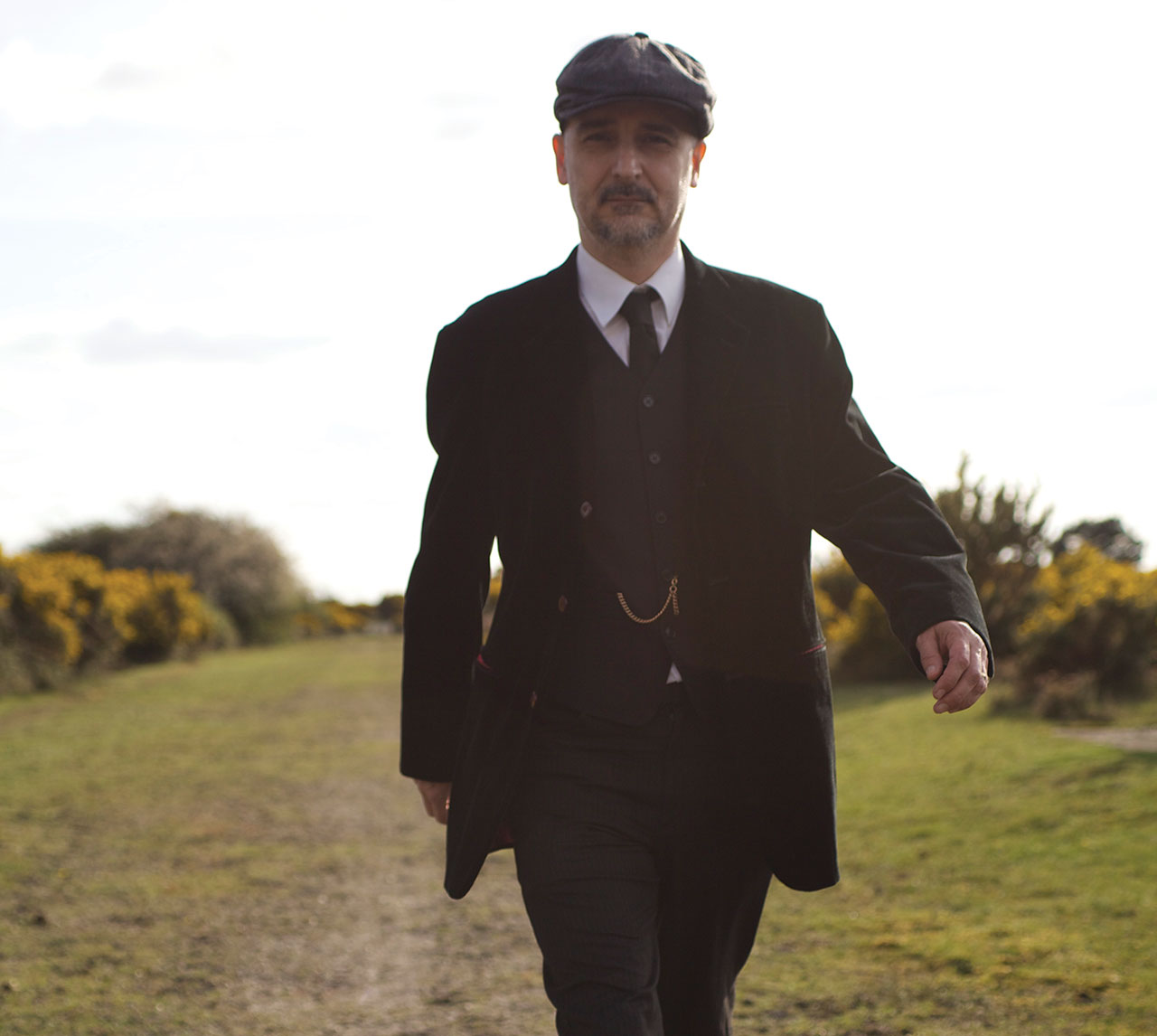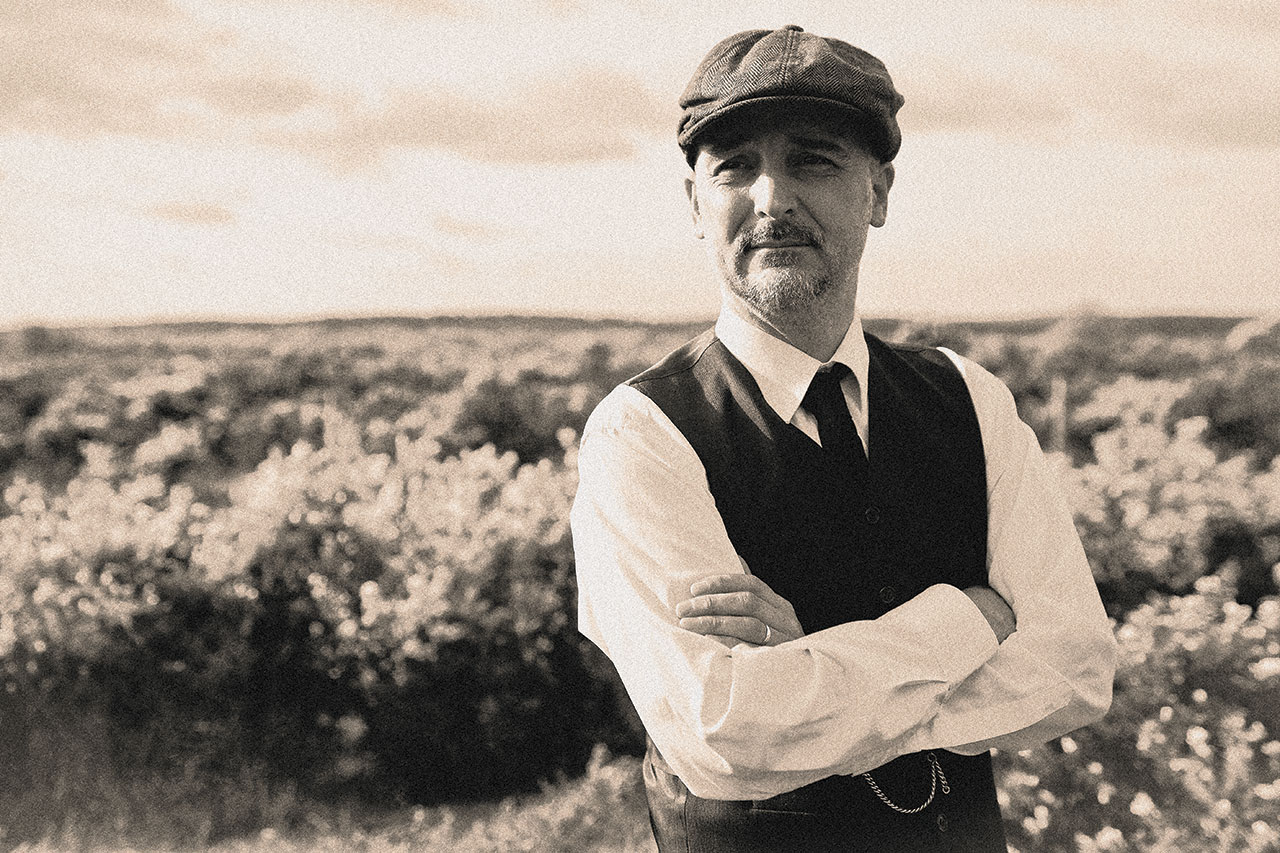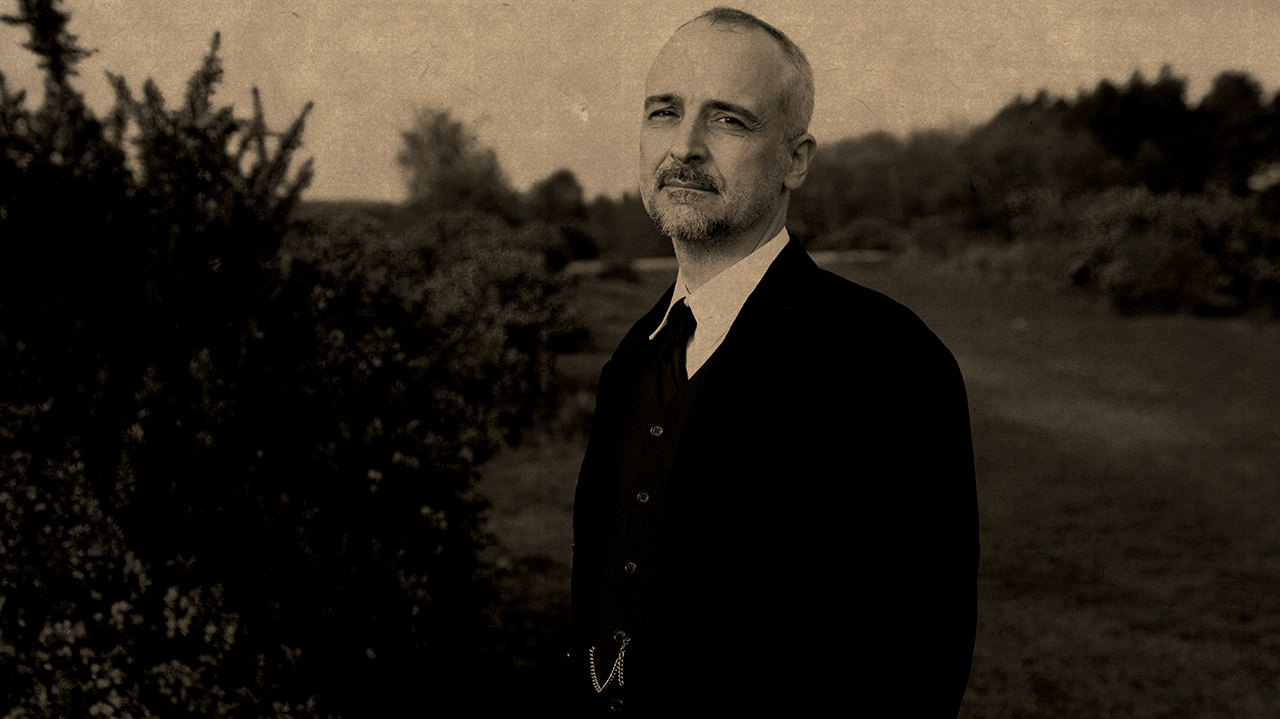He laughs it off, but Robin Armstrong’s been through the wringer lately.
For much of his adult life the Cosmograf linchpin has been plagued by chronic neck pain. It got so bad that by last year he was downing stop-a-horse painkillers just to get by. “It was horrible,” he tells Prog, with a wan laugh bereft of any humour. “It got to a stage where I couldn’t sleep, I’d spent thousands of pounds on physio and tests that didn’t help, and I was downing Amitriptyline just to function, but it knocked me for six. I could play or work at the mixing desk for half an hour but then had to stop. I’d wake up and go to bed in terrible pain. It was an utter nightmare.”
Then last March, a breakthrough. A lump he’d always had on his right arm – his picking arm – had begun to get noticeably larger. It then become clear to his doctor that this tumour (benign, fortunately) was the problem. It was sited on the radial nerve controlling motor function down the arm, and was relaying pain through Armstrong’s nervous system up to his neck. Desperate by now, he was referred to a specialist unit in London, where the tumour was removed in September.
“The operation resolved my neck issue completely,” he says. “As soon as I woke up, I knew things were different. It was almost a miracle. Within two weeks I was playing guitar again, but I was always sceptical – I thought it was going to come back. All these months on and it’s all good. I’ve got some loss of feeling at the base of the right thumb, but I can still play, as badly as I did before!” This time the laugh is warm and self-effacing.
And 2016 was a watershed in another way for Robin Armstrong. Despite the pain, he’d poured heart and soul into The Unreasonable Silence, his fifth album as Cosmograf. Befitting of the auteur behind The Man Left In Space, Capacitor et al, it was a highfalutin sci-fi concept album, based on Albert Camus’ heady philosophical treatise The Myth Of Sisyphus and featuring prog notables including Nick D’Virgilio, Nick Beggs and Spock’s Beard’s Dave Meros. Cosmograf’s website and social media feeds were full of fans with warm things to say about it, but to Armstrong, it was a disappointment.
“I really thought it was going to cause more of an impact than it did. I thought people would love it, but maybe the complicated nature and depth of it got lost on people. Sales-wise, it didn’t do anything as well as The Man Left In Space. And there was a lack of promotion for it – marketing’s always been a weak point for me.”

Listening to it again, The Unreasonable Silence is a solid progressive album in the 70s, Floydian mode, with plenty of the widescreen melodic tropes and high production values that are part of Cosmograf’s proggy brand. But if anything, perhaps Armstrong was sticking too closely to the hoary ‘sci-fi concept album’ boilerplate. It was as if, given everything else going on in his life, he could no longer see the space for the stars. “It could well be,” he says now. “And I didn’t want to go down that path again. So with this new album, I wanted six songs that would work in their own right, rather than tell a story.”
It’ll be interesting to hear what Cosmograf’s considerable, loyal fanbase will make of The Hay-Man Dreams. In many ways it’s his least characteristic album, and it might just be his best too. There is a story of sorts: in the late 19th century a farmhand dies and his wife builds a scarecrow in the field as a totem, to feel close to him through the years. Armstrong brilliantly imagines the world through this hay-man’s eyes, and tantalisingly there’s some truth behind the tale (see boxout).
This is the good ship Cosmograf crash landing to earth, in deep country, in the golden era of 70s rock. The tones are bucolic, heavy but folky in parts. With birdsong and country sounds evoking a pastoral mood, the album’s the colour of a summer’s dusk. Armstrong reels off a wonderful period term to describe what will be his first album released on vinyl. “I really wanted this to be a ‘listening album’, harking back to, say, Animals. The last album was packed with lyrics, but here they’re short and profound, and the instruments do more of the talking.”
Portentous opener Tethered And Bound sets up the titular character. It’s stark, doomy, claustrophobic even – Black Sabbath fronted by Peter Hammill, with Mellotron. “I made a very conscious effort to make this all sound vintage,” says Armstrong. “Hammond organs, Les Pauls – no instruments made after 1975! I love 70s music – Sabbath, Purple – that’s my roots, that’s what really gets me going, and from there I went off into more proggy styles.”
Armstrong’s friend Matt Stevens adds his trademark ambient fretwork to Trouble In The Forest, centred on the dead man’s heart-to-heart chat with his son, a conversation that was never to be, about working on the land and much, much more. “‘The struggle makes us honest’ – I always heard that as a kid,” says its writer. “It’s a family thing. Anything worth getting is going to be worked for. It’s a theme of the album: it’s a tough old life.”
There’s a little Tull in the bluegrass guitar riff driving The Motorway, a little Jimmy Page too, circa Over The Hills And Far Away. The rocky passages about driving a girl far in a car are pure Whitesnake. Armstrong takes comparisons like this in his stride. He has eloquently described how golden-age rock bands worked on a ‘greenfield’ site, whereas four decades on, musicians do what they can in their brownfield. “There’s really nothing new. You take parts from here and there, re-present it, but there’s nothing truly original. Here I was aiming for Micky Moody-era Whitesnake, the duelling guitar solos. I don’t try to be startlingly original, so it doesn’t bother me. Hopefully it still sounds like me.”
He channels Steve Hogarth on the searingly downbeat Cut The Corn; The Melancholy Death Of A Gamekeeper sees him duelling guitars with himself; and the clincher is 13-minute closer Hay‑Man, a beautiful summation on the story. Vocalist Rachael Hawnt portrays the widow hauntingly well, and Rachel Hall provides a lovely, lyrical violin solo, squeezed in during downtime at a studio session for Big Big Train. Veteran BBC continuity announcer David Allan reads snippets of Walter de la Mare’s poem The Scarecrow, and all these layers add to an album that lingers in the mind. It’s down‑to-earth, moving, aching with sadness. “I’m with Steven Wilson on this,” says Armstrong. “He’s a great advocate of there being beauty in sadness. It really can be an uplifting thing.
“To me this is a bonus album – I wasn’t even sure I was going to be able to make it. But when I came back to it after the hospital thing, it came together really easily. I just let it flow and it wrote itself, maybe because I didn’t have any expectations. It’s an immediate album, and while I hope Cosmograf’s audience get it, you can’t please everybody. You have to please yourself first.”
Cosmograf’s last live outing was at Celebr8.3 in 2014, and there hasn’t been a show since. He admits to finding them stressful. “And I don’t believe that playing small events makes a huge difference to your following. It takes a lot of time to organise, time I could be spending writing a new album. I’d much rather be in the studio where I’ve got control over the whole process. I like the way Big Big Train do it, a few select shows that instantly sell out.
“I’m not saying it’ll never happen, but being on stage with 100 people chatting to their mates, or on their phones – Hay-Man just wouldn’t work in that environment. And I can live with poor sales, I’m more interested in how well the record goes down with critics and fans.”
After all, it’s a listening album. One to listen to.
The Hay-Man Dreams is out on July 14 via www.cosmograf.com, with the vinyl edition released via www.planegroovy.com.

BACK TO MY ROOTS
Robin Armstrong reveals how the foundations of The Hay-Man Dreams lie in his family tree
“I’ve always had an interest in genealogy. When Age Has Done Its Duty was based on my mum’s folks, who were blacksmiths and lived in rural Shropshire. This is about my father’s side. My great-great-grandfather was a gamekeeper and labourer on a farm in Abergavenny in the late 1800s. A track separated his farm from the one his future wife worked on. They met, started a family, and then he died in mysterious circumstances while walking down a street. He ended up in a ditch. Some said he’d been shot by poachers, but the coroner suspected an epileptic fit – there was never a real conclusion.
“There was an article printed about it in the Monmouthshire Merlin, the local paper at the time, and the headline was ‘The Melancholy Death Of A Gamekeeper’. I thought to call the album that, but decided to keep it for the one song, as The Hay-Man Dreams lent itself to a bigger story.
“His name was Thomas Prosser, and he was about 27 when he died. He left my great-great-grandmother living in poverty with five children, one of whom was my great-grandmother. This got my imagination working. I had this idea that, in her anger and sense of loss, she builds a scarecrow, an effigy, and it becomes her point of contact with him, who she longs to have back. This scarecrow is stuck in this field, dreaming about his life of toil, his family, and his early death.”

